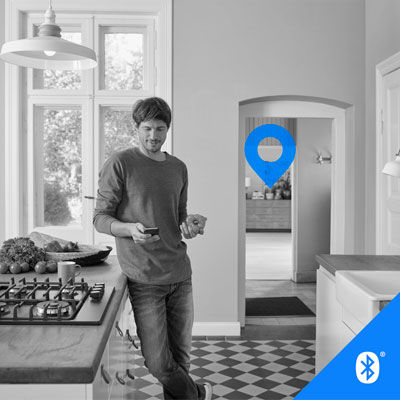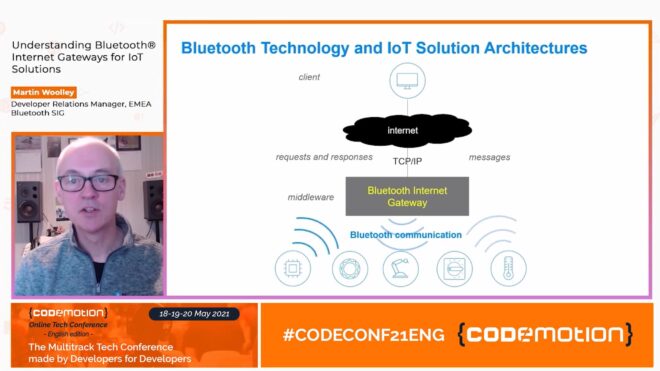Bluetooth SIG’s APAC Technical Program Manager shares his experience with bike sharing in Shanghai and suggestions for improvement
Ready or not, China, once known as the bicycle kingdom, is in the midst of a cycling revival. In Q2 of 2016, bike sharing became very popular. Potential riders install an app on their smartphone, register with an account, and then they are ready to ride using a smartphone to unlock their shared bike on the street. In major metropolitan areas of China like Beijing, Shanghai and Shenzhen, thousands of orange, yellow and blue bikes are on the street waiting for unlocking and riding. By the Shanghai bike association’s estimation, there will be half a million sharing bikes on the street just in Shanghai at the end of Q2, 2017.
I live in Shanghai near a university. The distance from the nearest subway station to home is less than 2km. It may take about 10 mins by bike during which I burn 100 calories and save 300g of carbon emissions. When it’s a sunny day and the spring wind is softly blowing, riding a shared bike through the campus is very enjoyable. If you drive a car during rush hour, 10 mins may only get you across two or three traffic lights.
As a bike sharing fan, there are some user experience problems which are confusing and frustrating:
- Unlocking the bike. Some of the shared bikes can be unlocked by scanning a QR code by smartphone. The smartphone then sends the QR code information to the cloud for verification, and cloud notifies the bike to unlock through the cellular network because the bikes have cellular module inside them. Occasionally, I encounter the embarrassing situation where, for no reason, I can’t unlock a bike. In this case, I must walk to home. What if it’s rainy? Frustrating.
- Finding a bike. Sometimes when I want to rent a bike, I open the app and I can see that there are a lot bikes nearby:

In your mind, you think that you’ll reach a destination like this:

But the actual situation often doesn’t match the photo above. There are so many bikes and they seem to look alike; how can I find the bike I want to ride or that I’ve already booked?

Of course, I’m a Bluetooth® technology evangelist and my blood runs blue, so I want to improve it by using Bluetooth, especially Bluetooth low energy. Below are my suggestions for improving the bike sharing experience.
1. Unlocking: Safe, Secure, and Effective
It’s very common and popular to implement Bluetooth® technology on smart locks, here are some statistics I have uncovered:
- On Amazon US (as of Feb. 2017), there are more than 150 smart locks which are Bluetooth enabled;
- On Chinese Jing Dong e-mall, there are more than 160 smart locks which are Bluetooth enabled;
So, Bluetooth® smart locks are already everywhere.
Meanwhile, as another pioneer of the sharing economy, Airbnb hosts have already taken advantage of the benefits of Bluetooth smart locks: host and guest don’t need to meet up when a guest wants to check in. The host just uses their smartphone to share the crypto key with the guest via an app. Then the guest just needs to enable Bluetooth on their smartphone and use the same app to unlock the Bluetooth smart lock and gain access to the house. The magic thing is that the key will expire automatically when it’s time to check out, protecting the privacy of host and guest. Because of this, Bluetooth smart locks are No.5 on “Top 10 essential tools Airbnb hosts should have”. Bluetooth technology is widely adopted in smart locks in part because:
- Low power consumption. This is very easy to understand, smart locks MUST use battery power and battery size should be tiny. If the lock had to be plugged in to power up, I can’t imagine how I could use it. Worse, if there is a power failure, what would I do? Obviously, Bluetooth low energy is the perfect solution here.
- Smartphone penetration. This is a huge advantage, as virtually all smartphones and tablets are already equipped with Bluetooth. Worldwide, over 96 percent of ALL phones and tablet have Bluetooth embedded so naturally, the wireless technology choice for a smart lock should be Bluetooth.

Recently, I’m pleased to find that Mobike, one of biggest sharing bike companies in China, has launched a Bluetooth unlock function. Open the app, and after scanning the QR code, the app will prompt that the user to enable Bluetooth if it isn’t already. The unlocking process is smooth and easy.
2. Finding a Bike
The bike sharing phenomenon is blossoming everywhere, so how can you allow users to quickly find the bike that they want, or that they have reserved? In my daily use of the process, there are two scenarios that come to mind:
- Just out of the subway station, how do I quickly find a bike that I want to ride?
- I have already booked a bike on the subway, how can I find it quickly after I get out the subway station?
Currently, some of shared bikes have self-power-generating mechanisms. Using the integrated power generator on the rear wheel generates power when riding and can substitute for an internal power generation module. In simple terms, user riding = bike powering. There are more advanced solutions – for instance, solar power. Even if it hasn’t implemented on shared bikes yet, there is already a corresponding solution in the market: a Bluetooth® low energy sensor node powered by solar panel. If shared bike operators would add this kind module to the bike, due to Bluetooth low energy’s extremely low power consumption, you could just park the bike in the sunshine and it would be enough to power the Bluetooth module on the bike.
With an energy storage solution, the problem can be solved by Bluetooth low energy in these two scenarios. When the user wants to find a bike, they would open the app, and click on the “find a bike” button. The smartphone can then send an advertising packet by Bluetooth module. The advertising packet may have different configurations to make all bikes, or just a specified bike, to flash its LED indicator once or twice per second to be easily seen. The user can then find the bike that they want and go to it directly. At present, I haven’t found the relevant application to enable this.
3. Beacons – A New Era for Sharing Bike Engagement
Bluetooth beacons have been at the forefront of a lot of interesting consumer and retail scenarios. As mentioned earlier, the vast majority of devices on the market have support for Bluetooth and hence Bluetooth® beacons, whether it is iBeacon or EddyStone. As long as you have a smartphone or tablet, you can use beacons. According to ABI Research’s forecast, in 2021, Bluetooth beacon shipments will reach 565 million units…that’s awesome!
93 percent of all MLB stadiums in the US have deployed beacons, along with 75 percent of all NFL stadiums, 53 percent of all NBA arenas, and 47 percent of all NHL arenas. If you are loyal fan of certain sport teams, Bluetooth beacons will push discount notification about souvenirs when you are in the stadium and even help you find your seat. Beacons can push coupons for 20 percent off Coca Cola and hot dogs at the half-time break and when the game is over, beacons can push a ticket discount for the next game. While these applications are out of scope of sharing bikes, Bluetooth beacons can enable bike sharing interactions with the user just like stadium beacons do.
Imagine if every shared bike were a beacon, they could engage with users to let them know what bikes are around them. People would come out of the subway station or office buildings and think, “what should I take back home: bus, cab or shared bike?” Beacons on the bikes would automatically push notifications out to the smartphones of those potential customers to say, “I’m near you and standing by, let’s go.”
Let’s imagine a bigger scenario: Shanghai downtown is about 2700 square kilometers, and will have half a million shared bikes by the end of Q2 in this year; that’s 18 bikes per square kilometer. If all of those bikes were Bluetooth enabled, the bikes would create a mobile beacon network. Bike operators could push any kind of information from these bikes to engage with 20 million people daily. If this happened, shared bike companies would gain revenue not just for bike rentals, but also advertising sales revenue.
4. Moving Forward
The combination of Bluetooth low energy and bikes has actually appeared before. On the Bluetooth SIG website, the SIG has already adopted profiles and services related to biking: Cycling Power Profile, Cycling Power Service, Cycling Speed and Cadence Profile and Cycling Speed and Cadence Service. These services could be used to create an even richer solution for the shared bike market. These profiles and services should influence bike sharing companies to implement Bluetooth® technology and innovate their businesses. The combination of Bluetooth low energy and the shared bike not only improves the user experience, but also increases the potential value of bike sharing. This revolution is right around the corner.
So, if you want to build a shared bike business, just think it through carefully…and don’t forget to add Bluetooth!































